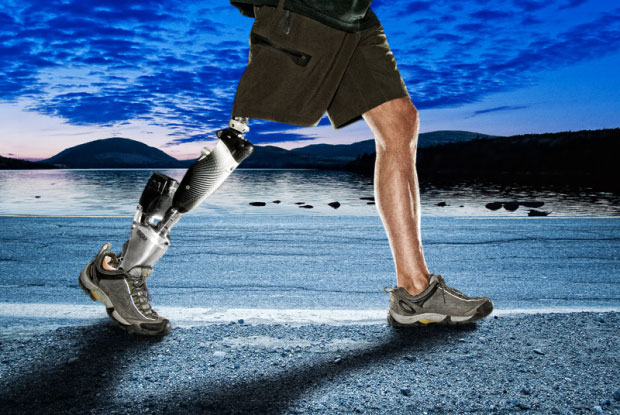Facing long term injuries and even disabilities can be overwhelming. Hiring a disability lawyer is usually the first step to ensuring you have the resources you need when you need them most. Beyond that you’ll also face life after your body has been fundamentally altered. Fortunately science has made amazing advances in prosthetics that can help you or your loved one lead a more normal, worry free life.

Limb Loss
Not so long ago the loss of a leg would mean a life that relied on wheelchairs or crutches to provide accessibility in public places. Nowadays there are a wide range of polymers that are used in the construction of artificial legs, allowing amputees the mobility to walk and even run. Most often you’ll find Carbon Fiber at the core of any prosthetic limb, users report that it gives a much more realistic sense of feedback and responds more like a flesh and blood limb. They’ll also often incorporate titanium for durability and thermoplastic sockets that are designed to provide comfort and prevent soreness and chafing at the site of the prosthetic attachment.
For those who have lost the use of their hands and other fine tuned musculature there is an exciting new advancement on the horizon, Myoelectric Technology. Using sensors attached to the site of the amputation the technology will actually read the electric signals put out by your body as you attempt to move the lost limb and translates those to direct actions by your attached prosthetic. This allows an unprecedented amount of fine tuned control in digit prosthetics. Users can now perform tasks like picking up pencils and coins and placing and turning keys.
Lastly a new procedure has been tried and tested a handful of times around the world with startling results: Targeted Muscle Reinnervation. This is similar to the Myoelectric Technology discussed above, but instead of relying on signals generated at the site of the amputation which provide a less exact response Targeted Muscle Reinnervation actually allows users direct control of their prosthesis with their mind. The nerves for the amputated limb are repurposed to another area on the user’s body, and whenever the user wants to use their prosthesis they simply ‘use’ the targeted nerves in the designated area which in turn send signals to a small processor on board the prosthetic. This allows for much finer control of the prosthetic and a much more natural feel for the user, as it’s much closer to how our bodies operate regularly.
With all these amazing new advances it can be easier to face life when you or your loved one have suffered a catastrophic injury, but you may want to consider hiring a long term disability lawyer to ensure that your insurance will provide for you in your time of need. While it may seem an easy thing to you, a long term disability lawyer can make sure that you get your due disability benefits and allow you to explore these and other options.
Reggie Stratton is a freelance tech writer based in the city of Hartford, CT.
New Prosthetics Technologies for Animals and Humans,





Rashmi Sinha
Mar 29. 2013
It is so nice to see how technology is helping not just humans but animals also. Hope more and more innovations take place in this direction in coming years so that more and more people can lead normal life again.
Erwin
Aug 30. 2013
Technology like this is something that is needed by people with disabilities. It will give strength and new hope to them, especially for young people who want to earn their future. Not the technology that destroys and corrupts everything.
Kim
Feb 03. 2016
This post has resolved our problem, thanks very much and hope you writing more good articles.